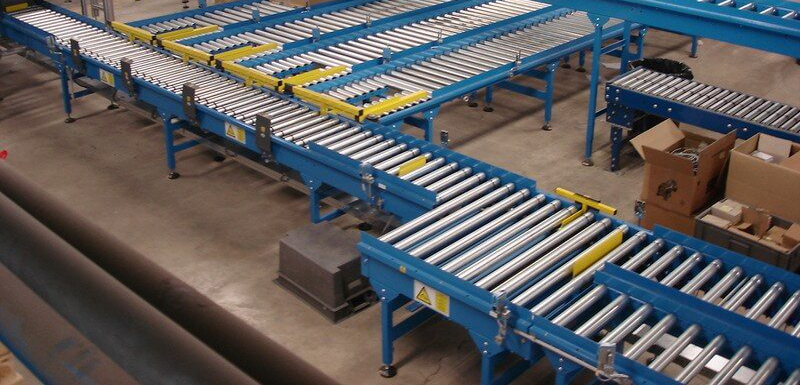
ROLLER CONVEYORS
A roller conveyor is a type of conveyor system that uses rollers to move objects along a conveyor belt. Here are some key features and specifications:
Components
- Rollers: The cylindrical components that rotate to move objects.
- Frame: The structural housing that supports the rollers.
- Belt: The conveyor belt that connects the rollers.
- Drive: The mechanism that powers the conveyor.
Specifications
- Roller Diameter: 30 mm to 150 mm (1.2 in to 5.9 in).
- Roller Length: 300 mm to 3000 mm (11.8 in to 118 in).
- Conveyor Length: Up to 100 meters (328 ft).
- Speed: Up to 100 meters per minute (328 ft/min).
- Load Capacity: Up to 1000 kg (2200 lbs) per meter.
Types
- Gravity Roller Conveyor: Uses gravity to move objects.
- Powered Roller Conveyor: Uses a motor to power the conveyor.
- Chain-Driven Roller Conveyor: Uses a chain to connect the rollers.
- Belt-Driven Roller Conveyor: Uses a belt to connect the rollers.
Applications
- Warehousing: Used for storing and transporting goods.
- Manufacturing: Used for assembling and transporting products.
- Logistics: Used for sorting and transporting packages.
- Food Processing: Used for transporting food products.
Advantages
- Low Maintenance: Easy to maintain and repair.
- High Efficiency: Can handle high volumes of objects.
- Flexibility: Can be customized to fit specific applications.
- Cost-Effective: Can reduce labor and transportation costs
- Roller Conveyor systems are commonly used in many industries including Automotive, food processing, pharmaceutical, chemical, packaging, warehouses to handle cartoon, boxes with powered and non powered type roller conveyor are available
